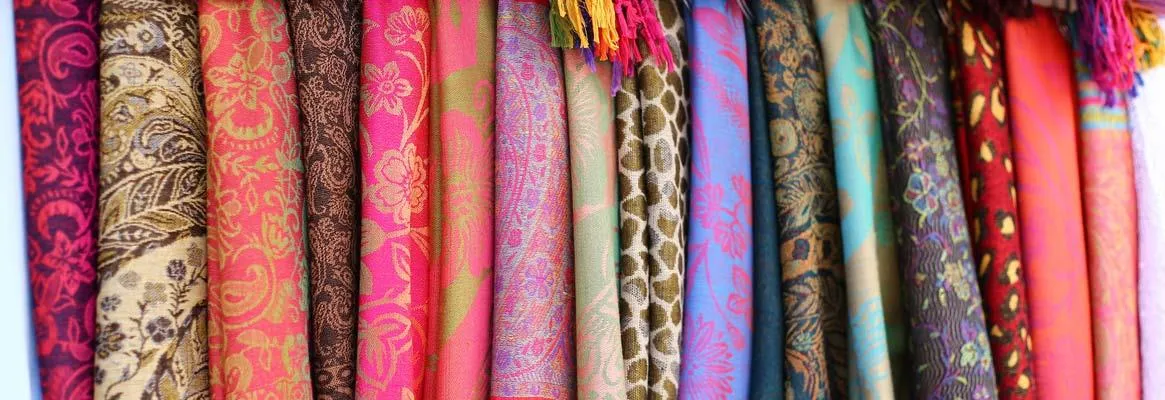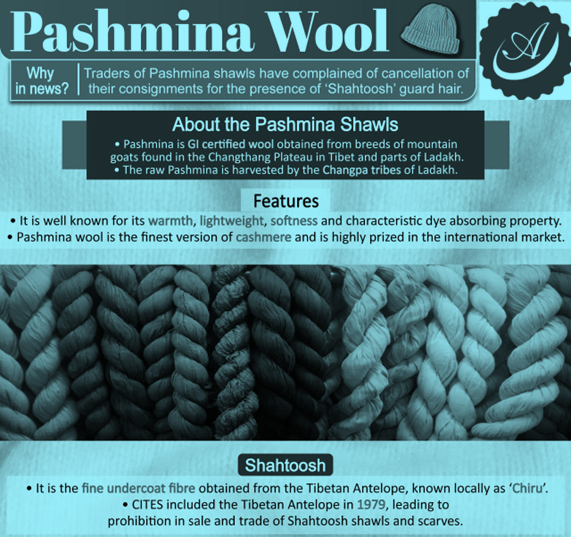Free Courses Sale ends Soon, Get It Now


Free Courses Sale ends Soon, Get It Now



Copyright infringement not intended
Context: The Kashmir Chamber of Commerce and Industry (KCCI), a Valley-based merchants' organisation, has highlighted the problem of pashmina shawl seizure and substandard testing with the Union Minister for Forest, Environment, and Climate Change.
Details
What are the Concerns?
Shahtoosh guard hair
Delays in testing
Declining export

Keywords
Shahtoosh Ban
Wildlife Trust of India (WTI)
Must Read Articles:
Pashmina shawls: https://www.iasgyan.in/daily-current-affairs/pashmina-17
|
PRACTICE QUESTION Q. Consider the following Statement; 1. It refers to a fine variant of spun cashmere, the animal-hair fibre forming the downy undercoat of the Changthangi goat. 2. India accounts for 70% of the world's cashmere production. 3. Kashmiri Pashmina has got the GI tag. Which of the following Statement is/are correct? (A) 1 and 2 only (B) 2 and 3 only (C) 1 and 3 only (D) 1, 2 and 3 Answer: C Explanation: Statement 1 is correct: Pashmina refers to a fine variant of spun cashmere, the animal-hair fibre forming the downy undercoat of the Changthangi goat. Statement 2 is incorrect: China accounts for 70% of the world's cashmere production, Mongolia 20%, and the remaining 10% of production is in Afghanistan, Australia, India, Iran, Nepal, Pakistan, and the United States. Statement 3 is correct: Kashmiri Pashmina has got the GI tag. It has been registered under the Geographical Indications registry of India. |
https://epaper.thehindu.com/ccidist-ws/th/th_delhi/issues/30911/OPS/GTKB2GR0I.1+GPIB2GVVE.1.html
© 2024 iasgyan. All right reserved